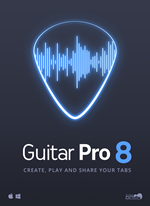Aeolian Mode - Natural minor
In my music theory class in college, I was taught to derive the harmonic minor scale from the aeolian mode - natural minor scale. Lets use the key of C with no sharps or flats for our example.
Providing we have already derived the C major scale with the major scale formula, W,W,H,W,W,W,H we end up with
C,D,E,F,G,A,B,C for the C major scale.
We derive the Aeolian mode or natural minor scale by starting on the 6th note of the major scale and rewriting the scale starting with the 6th interval. From the Key of C major, we would start on the A note and get A, B, C, D, E, F, G, A. Yes, it uses the same exact notes as the C major but the intervals are now different when playing them in the new order and it produces a sad tone.
Deriving the Harmonic Minor Scale - Now that we have derived the aeolian mode, we can simply derive the harmonic minor by sharping the 7th interval of the natural minor scale.
Aeolian mode - naturual minor - A, B C, D, E, F, G, A
Harmonic Minor - A, B, C, D, E, F, G#, A
NOTES: Providing we use the key of C and use only the chords from the key of C we would have
C, Dm, Em, F, G, Am, Bmdim, C. We can play the Aeolian mode natural minor position, just remember, you are also playing only notes from the key of C major. If you play the Am chord which is the 6th chord of C major and you play the Aeolian mode (natural minor scale) you really begin to hear the aeolian mode, intervals and tones.
So, play an Am chord and then play the natural minor scale starting on the A note: A, B, C, D, E, F, G, A.
Next, play the Am Chord and then play the Harmonic minor scale starting on the A note: A, B, C, D, E, F, G#, A
Summary:
C Major scale: C, D, E, F, G, A, B, C
C Major chords: C, Dm, Em, F, G, Am, Bmindim, C
Am - Natural Minor scale (aeolian mode): A, B, C, D, E, F, G, A
Harmonic Minor: A, B, C, D, E, F, G#, A
Try to play the chords from the key of C and then play the notes from the key of C major with the different chords. Also, choose different positions around the guitar neck when playing the notes. Try playing the natural minor position against the chords and also experiment playing the harmonic minor, especially against the Am chord!
Modes: Playing the notes from the C major scale starting on C through C, then D through D, then E through E etc... allows you to hear the different modes. They sound different when playing them with their respective chords in key because of the different intervals that make up each chord as well as each scale. One might say "the chord dictates the mode" when using this method and playing in key.
Advanced - Playing different modes outside of a key: This is a topic in itself, but I often experiment playing various minor scales against any minor chord. I also like to play a minor scale and mix it up with minor blues scales when playing a 1,4,5 major progression.
Example: G major: G, Am, Bm, C, D, Em, Fmdim, G
A 1, 4, 5 major progression would use the chords G, C, D.
I will sometimes play a natural Gm scale and mix in a G minor Blues scale against a G major 1,4,5 progression! I remember the first time I did this and thought to myself, wow this really makes a 1,4,5 progression sound like Rocken Blues. If I only followed the basic key and rules and played only the notes from the key of G major against the 1,4,5 (G, C, D), I personally think it starts to sound happy or even country'ish, which is fine, but if I want that progression and solo to be rockability blues, I will use a natural minor scale against the major progressiojn any day of the week :). :). Once we learn the rules well, we can begin breaking the rules and experimenting playing various modes that are outside of the key and come up with new ideas.
Use your Metronome
To practice this scale and really move your guitar playing to the next level make sure you practice this with your metronome. At the very least, use your drum machine and try not to get carried away and stay focused on practicing the scale. Make sure you alternate pick it and if you really want to challenge yourself after you master it starting with a down pick, try starting it with an up pick and see if you can get your speed as fast as you got it with your down!
Start out playing slow and shoot for accuracy. Play each section 10 times and for best results increase the metronome 6 clicks at a time after playing it 10 times.

